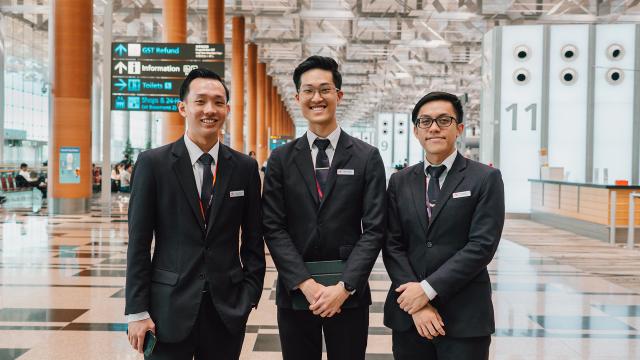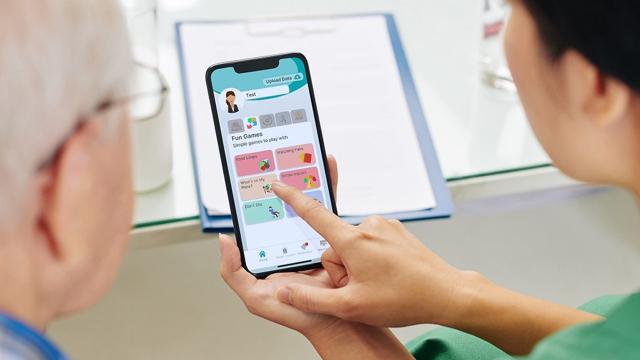Senior Professional Officers and academic staff have worked together to design lessons that incorporate the Robot Operating System for Mechatronics Systems and Computer Engineering students.
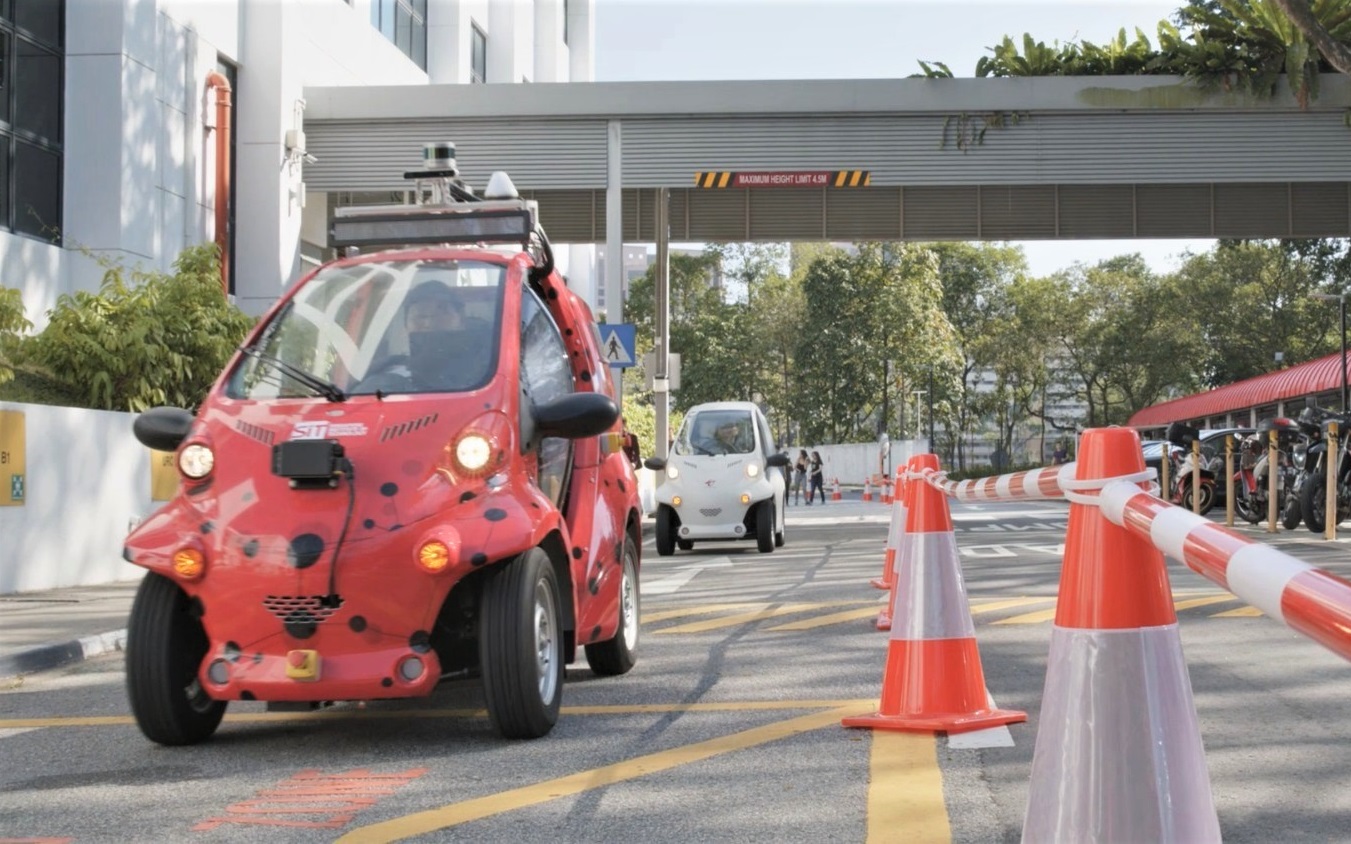
Students testing an autonomous vehicle used in the Robot Operating System lessons at SIT.
An autonomous vehicle (AV) glides along a road at low speed, its movement seemingly independent. It gradually accelerates, while cameras and sensors installed around it are primed to signal alerts when obstacles are nearby.
Unbeknownst to the naked eye, a one-stop command centre called a Robot Operating System (ROS) dictates the AV’s movements. The ROS is a collection of tools and libraries which simplifies the task of designing, testing and implementing complex and robust robotics applications. As a middleware, it enables connectivity between multiple front and back end applications. In this case, it allows engineers to send ‘messages’ to the AV to toggle parameters like speed, camera angle and range of sensors.
While ROS is more commonly deployed as an advanced industry tool, students at the Singapore Institute of Technology (SIT) have been getting their feet wet by operating the software. With robots becoming increasingly commonplace in healthcare, manufacturing, food preparation and the military, ROS has also been growing in popularity. This prompted SIT to introduce ROS as a learning aid for students.
Theoretical classes are combined with one-hour practical lab sessions, which familiarise students with robotics technology and how it can be used in robotic platforms and design. The classes also better prepare second-year Mechatronics Systems and third-year Computer Engineering students for advanced subjects in university, and when they enter the workforce.
“We use ROS to spark students’ interest in robot applications, as well as broaden their understanding of electronic components and how complex robotic systems work,” said Senior Professional Officer (PO) Teo Boon Ping, who helms the classes with several colleagues. “There is a high demand for engineers who can develop ROS applications, so we want to encourage students to discover more about the real-world applications of the software.”
Learning the parts that make a whole
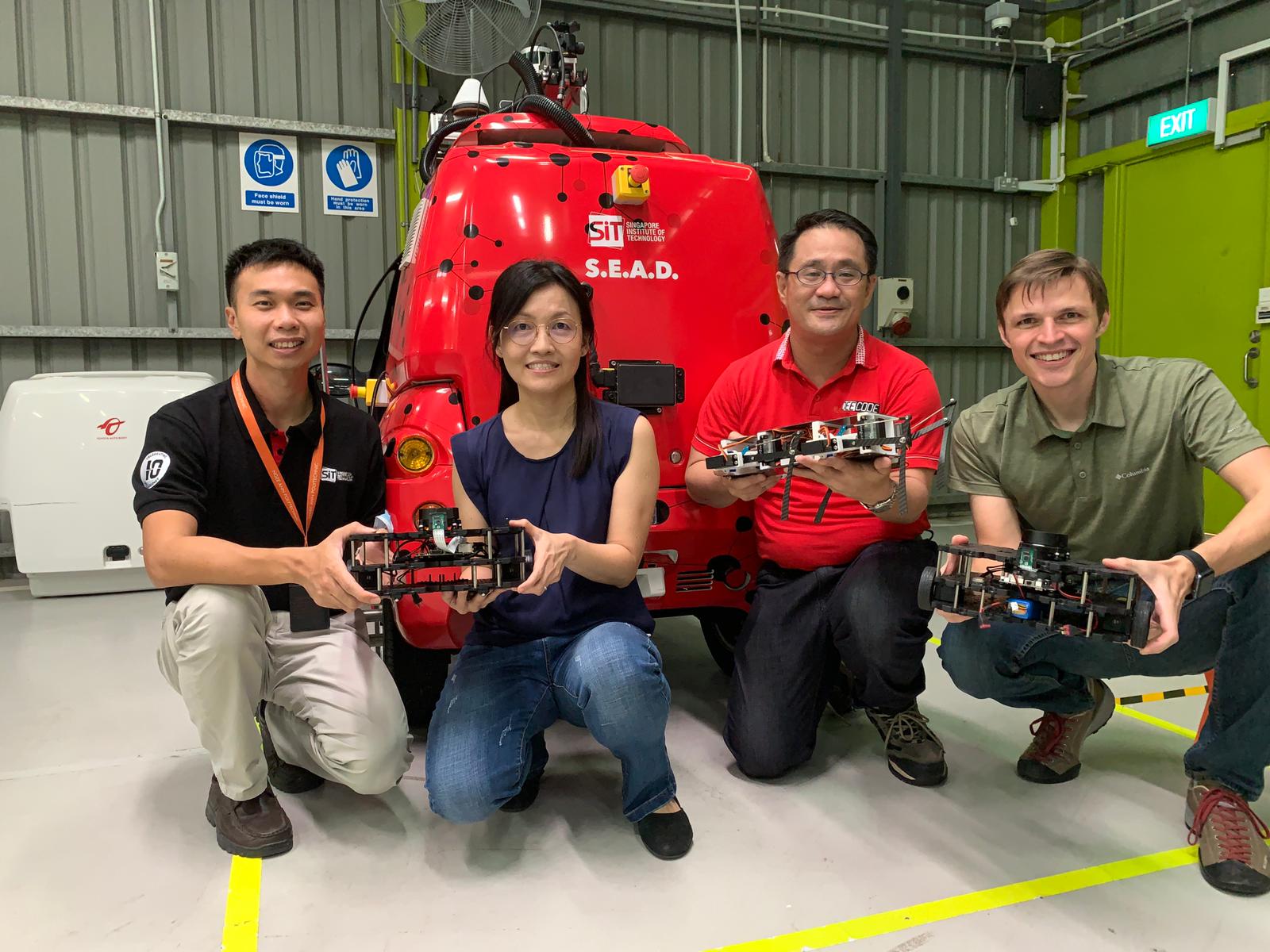
From left: Senior POs Eugene Lee, Cherine Ng and Teo Boon Ping, and Assistant Professor Peter Waszecki are part of the team behind the ROS lessons. The Waffle robots held by Eugene, Cherine and Asst Prof Waszecki are used as a learning tool in place of an actual AV during the ROS lessons.
Back in 2018, Mr Teo and his fellow POs had identified a gap in students’ knowledge on system design. Tapping on their industry experience in maritime, land transport and semiconductors, they aimed to conceptualise lessons that go beyond the basics to get students more heavily involved in designing, testing and implementing complex and robust robotics applications.
The hands-on approach involves designing complex systems using simulations, then implementing them on an actual robot or electric AV. Students first explore the simulation platform enabled through ROS, where they can synchronise different sensors, motors and cameras to enable functionalities such as mapping, localisation, navigation and visualisation. Once simulated testing is completed, students deploy the actual action on the robot or AV.
“One lesson would entail students testing how camera visuals will appear indoor and the effect on camera visibility. In another class on motors, students would change code on the command to control the speed of the motor,” said Senior PO Cherine Ng.
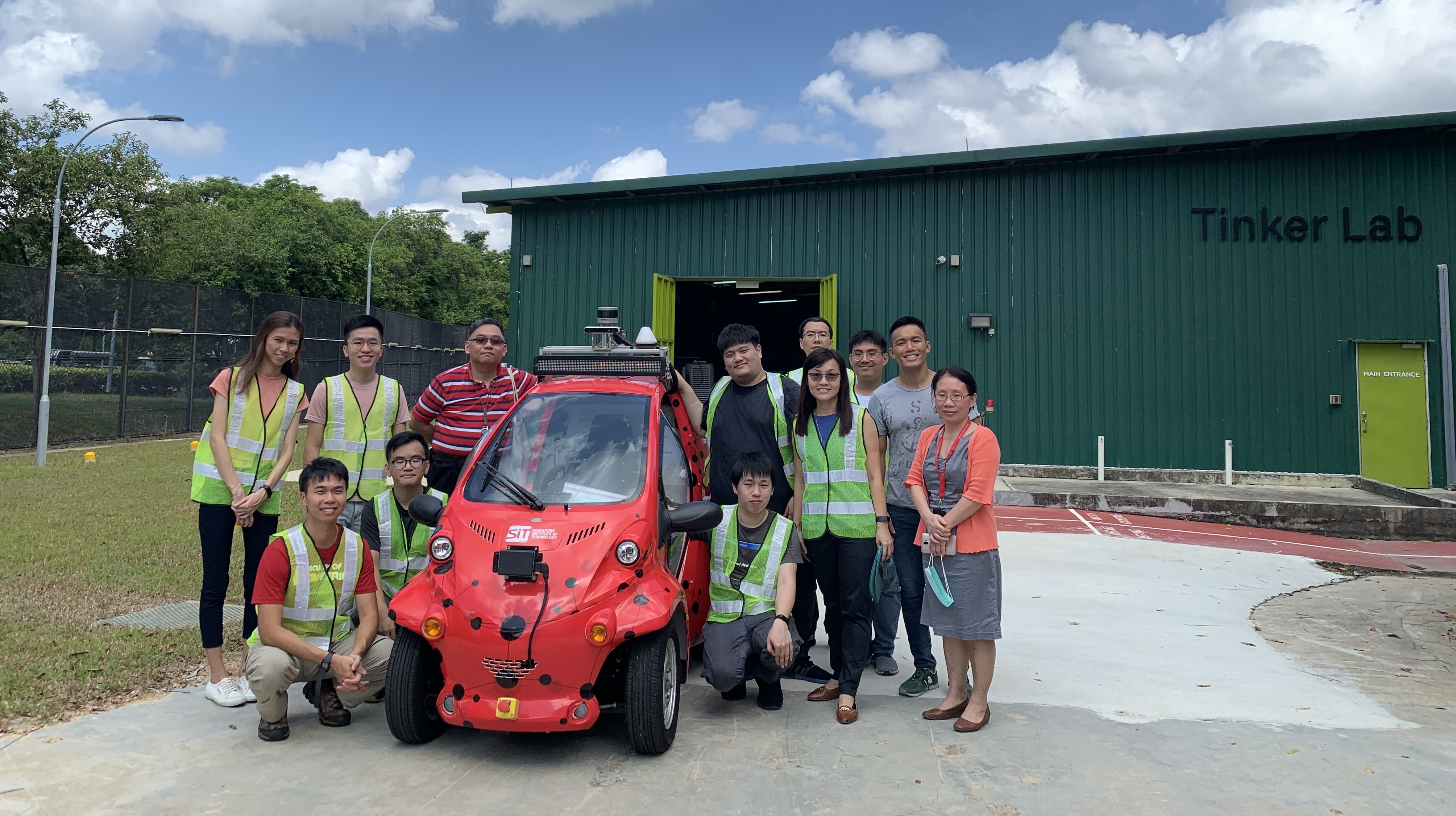
Telematics students with Senior POs Eugene Wee (red shirt with vest), Leong Mun Wai (red striped shirt), and Cherine Ng (blue shirt with vest); A/Prof Zheng Jianxin (behind Cherine); Research Engineer Wong Qi Xian (grey shirt) and Research Fellow Mo Ronghong (grey dress).
It takes an entire trimester to build up an understanding of robotics-related hardware. However, it helps that Mr Teo and his team have curated a learning plan to match the students’ abilities, having taught them since their first year. Besides Mr Teo and Ms Ng, the team behind the ROS lessons include Senior PO Eugene Lee, Associate Professor Wee Liang Boon (Infocomm Technology cluster) and Assistant Professor Peter Waszecki (Infocomm Technology cluster).
Once students have a firm grasp of what makes up a robotics system, they will then embark on a one-and-a-half-hour lab session during their final class to learn how ROS glues everything together.
“The challenge in using ROS is being able to have an overview of the entire platform and how it can be used to design a product, instead of getting caught up in individual components,” explained Mr Teo.
When robotics comes alive

The Waffle robot.
Affectionately known as Waffle, the Turtlebot3 Waffle Pi is a pint-sized, two-wheeled robot that is used as a learning tool in place of an actual AV during the ROS lesson.
By controlling Waffle through ROS, students learn about motor modelling as well as speed and distance control. The robot is able to move in four directions via a keypad command. Through coding, students can adjust the speed through increments. For example, they can instruct the miniature vehicle to raise its speed by 1m per second every time the forward key is pressed.
“The feedback from students has been encouraging,” said Ms Ng. “They like having hands-on experience, as they find that implementing a control loop on a physical system is quite different from designing one based on a theoretical model.”
While Waffle is the only ROS aid used at the moment, the POs hope to work with SIT faculty staff to include more hardware like robotic arms in ROS classes in the future.
“Once we have exposed them to these concepts and methodologies, we hope it can push them to learn more on the job when they are in the industry,” added Mr Teo.
![[FA] SIT One SITizen Alumni Initiative_Web banner_1244px x 688px.jpg](/sites/default/files/2024-12/%5BFA%5D%20%20SIT%20One%20SITizen%20Alumni%20Initiative_Web%20banner_1244px%20x%20688px.jpg)

